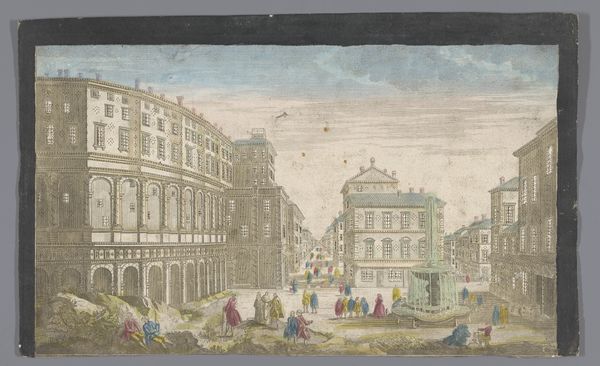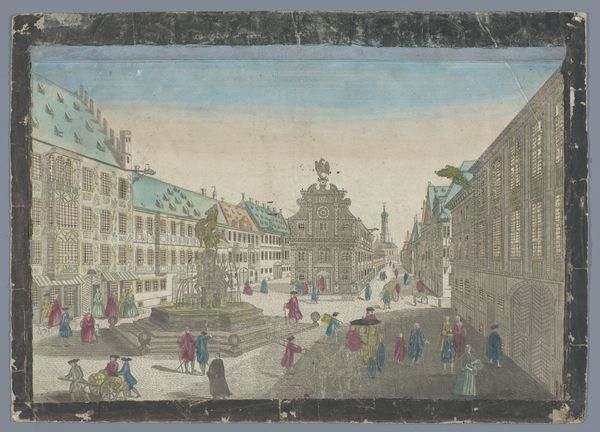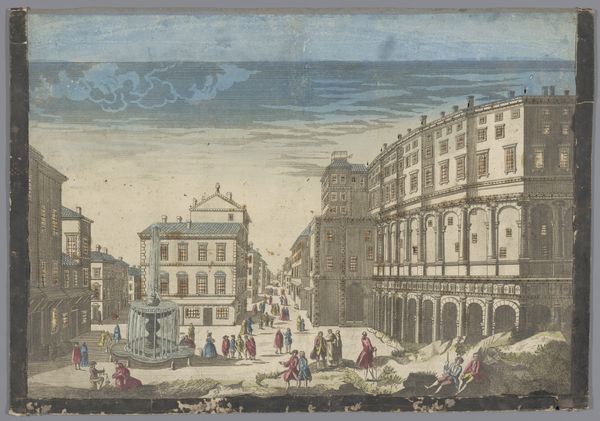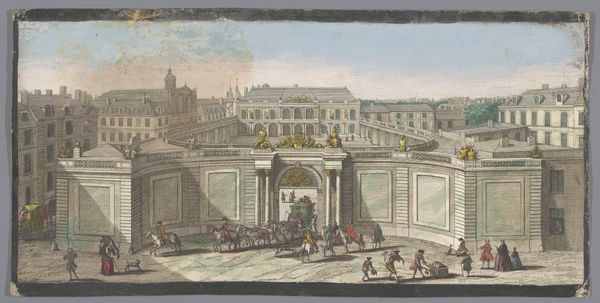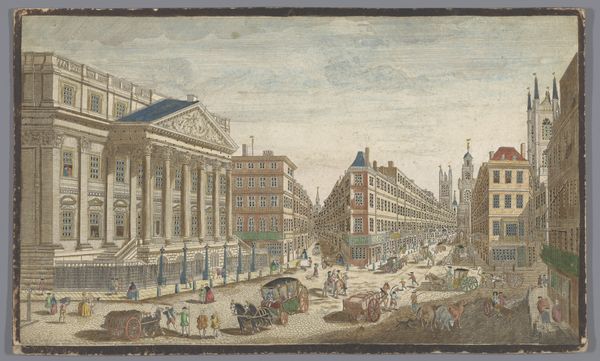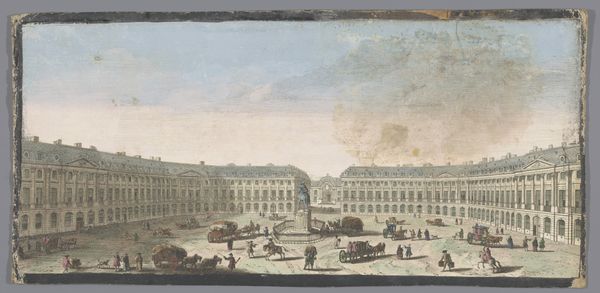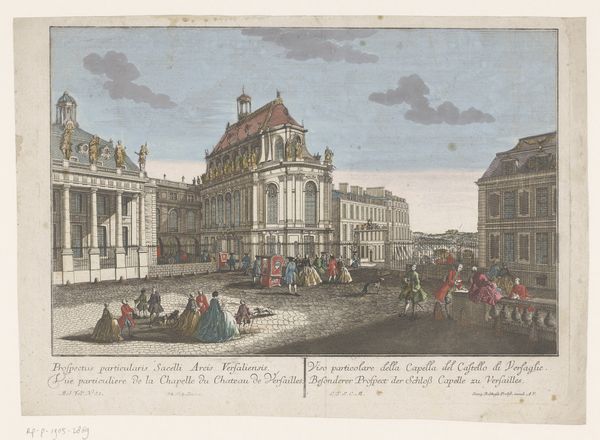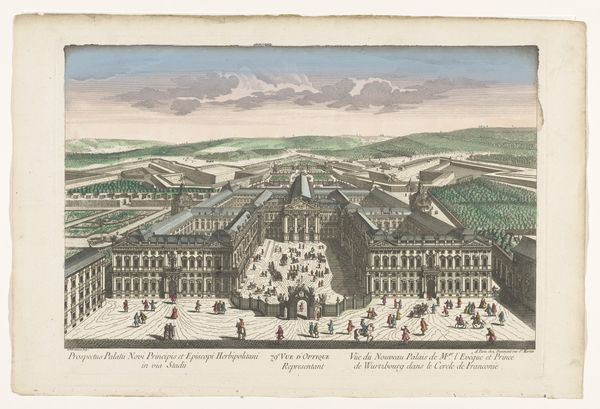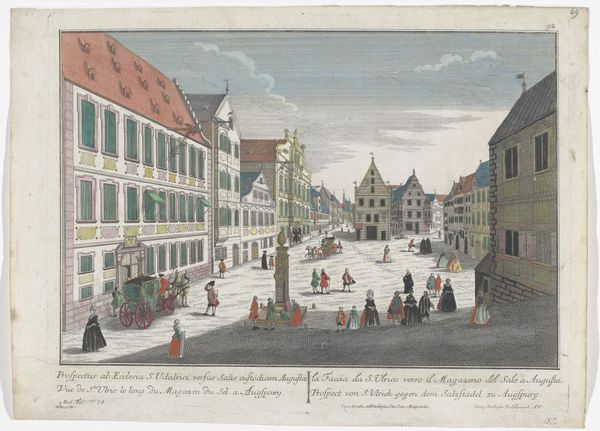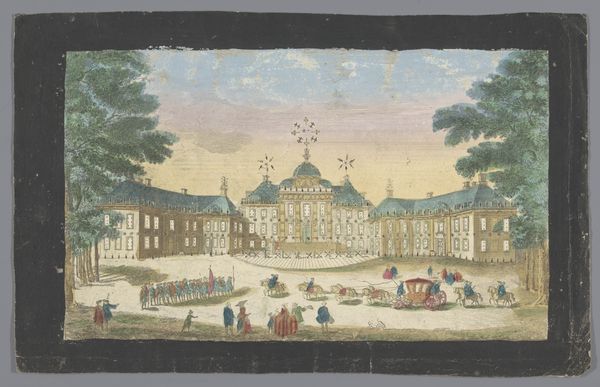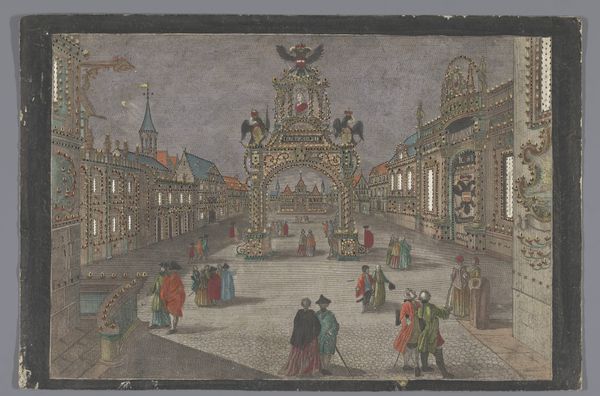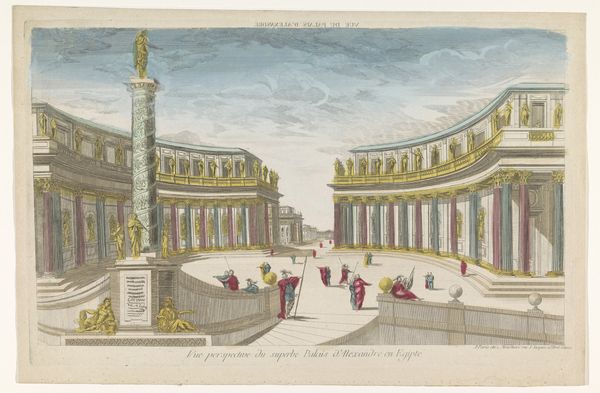
Gezicht op het Palais Visendic en de academie voor schilderkunst en beeldhouwkunst te Wenen 18th century
0:00
0:00
basset
Rijksmuseum
painting, watercolor
#
water colours
#
baroque
#
painting
#
watercolor
#
coloured pencil
#
cityscape
#
genre-painting
#
watercolor
Dimensions: height 279 mm, width 442 mm
Copyright: Rijks Museum: Open Domain
Editor: So, we’re looking at an 18th-century watercolor and coloured pencil work, “Gezicht op het Palais Visendic en de academie voor schilderkunst en beeldhouwkunst te Wenen” or "View of the Palais Visendic and the academy of painting and sculpture in Vienna," from an unknown artist, here at the Rijksmuseum. It has such a vibrant, theatrical feel. What do you see in this piece? Curator: I see a performance, a stage for social roles. The baroque architecture isn’t merely background, but a deliberate construct reflecting power. Look at the academy - it represents not just artistic skill but also institutional control, shaping artistic expression according to prevailing ideologies. How might these power structures influence who gets to create, whose art is valued, and which stories are told? Editor: I guess it excludes certain people? Curator: Precisely. Consider the figures populating this cityscape. Who are they? Aristocrats? Bourgeoisie? Are marginalized communities represented? This scene is likely curated, depicting an idealized vision of Vienna, masking underlying social tensions. The Palais Visendic becomes more than just a building, it's a symbol of the privileged, enabled by a system that often oppresses others. Editor: That really shifts my perspective. It's easy to see a pretty scene and not think about the power dynamics at play. Curator: Art is never neutral. It's always entangled with questions of identity, power, and representation. We need to ask, whose gaze are we adopting when viewing this work? And what narratives are being silenced? The function of the Academy is part of this broader framework and context, dictating an aesthetic as it upholds a specific ideology. What do you make of it now? Editor: It makes me think more critically about what I’m actually seeing and its implications. Thanks for this deep dive. Curator: It's in questioning what's in front of us that we learn the most. Thanks for the questions.
Comments
No comments
Be the first to comment and join the conversation on the ultimate creative platform.
